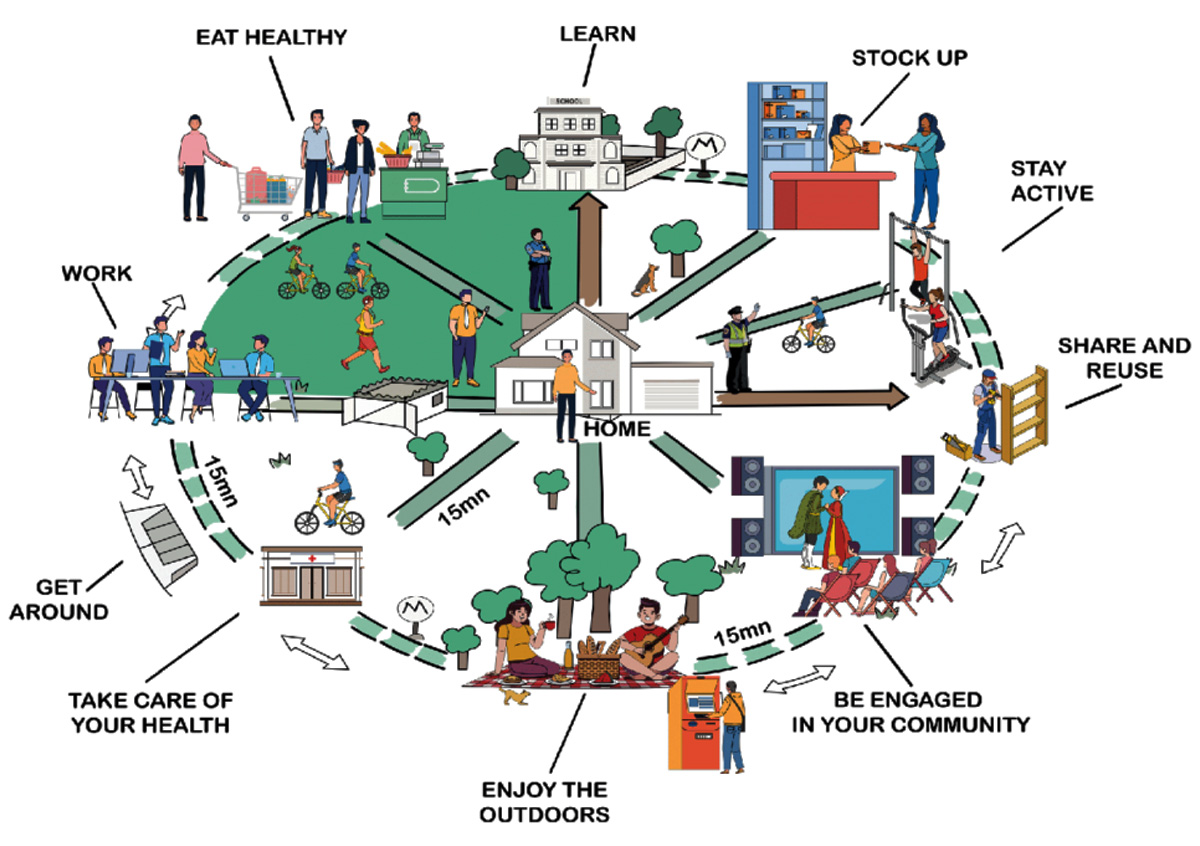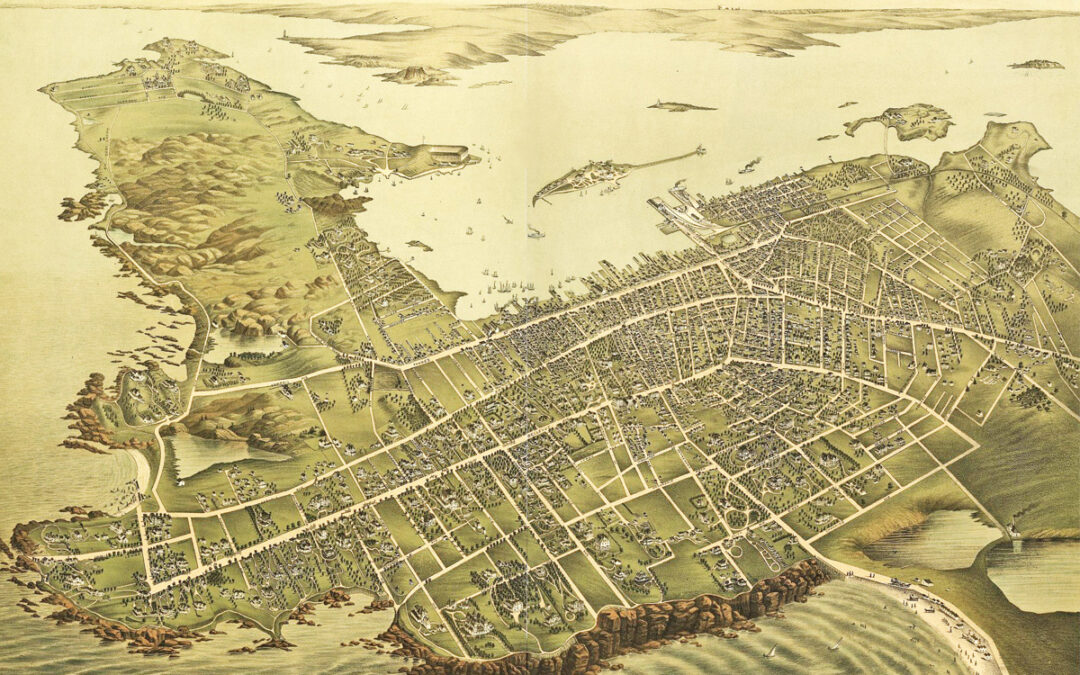Colonial Map of Newport, Rhode Island (1878)
The 15-Minute City is an urban design concept that aims to create neighborhoods where all of a resident’s essential needs can be met within a 15-minute walk or bike ride. This includes access to housing, food, work, education, healthcare, recreation, and culture. The concept is derived from historical ideas about proximity and walkability, such as Clarence Perry’s “neighborhood unit” concept from the early 1900s. However, the 15-minute city concept was first popularized in 2016 by Franco-Colombian scientist Carlos Moreno, a specialist in intelligent control of complex systems.
Moreno envisioned the 15-Minute City as a way to address the many challenges facing modern cities, including climate change, air pollution, traffic congestion, and social inequality. He argued that by making it easier for people to live, work, and play close to home, the 15-Minute City could help reduce car use, improve public health, and create more livable and sustainable communities.

15-Minute City Diagram
The concept has gained traction in recent years, particularly in Europe, where several cities have begun to implement it. In Paris, for example, Mayor Anne Hidalgo has made the 15-Minute City a central part of her urban planning vision. The city has implemented a number of initiatives to make it easier for people to get around on foot and by bike, including creating new pedestrian and bike lanes, reducing car traffic in certain areas, and expanding public transportation.
This concept is also gaining traction in other parts of the world, including North America, Australia, and Asia. In Melbourne, Australia, for example, the city council has adopted a 20-minute neighborhood plan, which is similar to the 15-Minute City concept. The plan aims to create walkable neighborhoods that are connected through a mix of land uses, housing types, and access to quality public transportation. The importance of this concept is growing as climate change accelerates and the need to reduce automobile traffic and CO2 production is increasing with each passing year.

Thames Street (Newport, Rhode Island)
Newport, Rhode Island is fortunate in itself to already comply with the general guidelines of the 15-Minute City principles. Within the central compact city center are residences, offices, museums, libraries, grocery, retail stores and a wide variety of restaurants and lodgings. Newport provides everything one needs to “Live, Work and Play” without traveling by car. It is partially for this reason that Newport has become both an attractive place to live and visit. Unlike the other four largest cities of the American Colonial era, New York, Boston, Philadelphia and Charleston, Newport’s size has remained relatively constant over time and has remained compact in size and mixed-use in zoning and function.
Newport and other Rhode Island villages and small cities such as Jamestown, Narragansett, Westerly and Wickford offer excellent models for not only how people WANT to live, but how people will NEED to live in the future if we are to slow and then reverse the climate change that threatens human culture and future prosperity.

Aerial view of Newport, Rhode Island (Photo Credits: PJ Dougherty)
Ross Cann, RA, AIA, LEED AP, is an author, historian, and practicing architect living and working in Newport, RI. He holds honor degrees in Architectural History and Design from Yale, Cambridge, and Columbia Universities. He is currently teaching a course on Hunt and his early years for The Circle of Scholars Program at Salve Regina University.
